Posts Tagged ‘DFW smog’
Sept 23rd: Dallas is Site to One of Three National Public Hearings on EPA’s New Methane Rules – Speak Up to Include Them in Current Air Plan
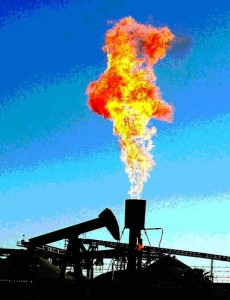 Hot off the presses, the EPA published notice in this morning's Federal Register that Dallas will be the site of one of only three national public hearings the Agency is hosting concerning its proposed rules designed to reduce methane emissions at new oil and gas indusry facilities.
Hot off the presses, the EPA published notice in this morning's Federal Register that Dallas will be the site of one of only three national public hearings the Agency is hosting concerning its proposed rules designed to reduce methane emissions at new oil and gas indusry facilities.
On September 23rd, from 9 am until 8 pm in the Dallas City Council Chambers, the EPA will be accepting testimony from the public, in five-minute increments. You can register for your five minute slot online at www.epa.gov/airquality/oilandgas/ between now and September 18th.
Announced to great fanfare only last week, the rules promise to cut future pollution levels as new equipment comes on line, but does nothing about existing faciltiies – with one important exception.
For metropolitan areas like DFW that host large concentrations of gas pollution sources AND are in violation of the Clean Air Act for their smog pollution, EPA has said that states must address new “Control Technique Guidelines” written by the Agency to reduce missions of Volatile Organic Compounds as part of thier smog-figthing plans for those areas. That's good because its smog-forming VOC pollution like Benzene and Toluene that also makes up some of the most toxic air pollution these facilities can emit. The catch is that the rules give the states a two year grace period.
That means that even though the State of Texas and EPA are wrestling over a clean air plan for DFW right now, and even though one of the major smog-polluting industries in DFW are the 17,000 or so wells, almost 700 large compressors and thousands of other oil and gas facilities in North Texas, those new Control Guidelines will not have to be included in that current plan. But they should be.
If you're going to testify, please be sure to make the request that the EPA and Texas go ahead and include these "VOC CTGs" for non-attainment areas in the current DFW air plan. These are anti-smog measures that are no-brainers in a region which has never been in compliance with the Clean Air Act. And they also mean a total reduction in hazardous air pollution.
For more information about the public hearings, contact Ms. Aimee St. Clair, Office of Air Quality Planning and Standards (E143–03), U.S. Environmental Protection Agency, byphone at (919) 541–1063, or by email at StClair.Aimee@epa.gov.
The Impact of the EPA’s New Methane Rules on the Barnett Shale? TBD
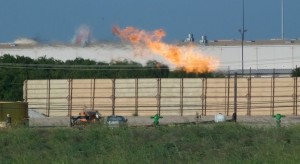 Despite all the gnashing of teeth by industry and hallelujah choruses from the Big Green groups, the new methane rules proposed by the Obama Administration this last week have no immediate impact on facts on the ground in the Barnett Shale.
Despite all the gnashing of teeth by industry and hallelujah choruses from the Big Green groups, the new methane rules proposed by the Obama Administration this last week have no immediate impact on facts on the ground in the Barnett Shale.
That’s because, like the recent coal CO2 rules, they regulate future facilities, not the 17,000 or so wells, plus infrastructure, already operating in the Barnett.
They do bring a welcome spotlight to “downstream” facilities like gathering lines and compressors, which is where most of the methane in the gas fuel cycle escapes. They also concede the connection between methane releases and smog (“…reduction of VOC emissions will be very beneficial in areas where ozone levels approach or exceed the National Ambient Air Quality Standards for ozone”), as well as methane and more toxic Volatile Organic Compounds such as Benzene and Toluene (“The measures proposed in this action achieve methane and VOC reductions through direct regulation. The hazardous air pollutant (HAP) reductions from these proposed standards will be meaningful in local communities.”)
EPA’s new rules set a floor for emissions that the industry, over time, will eventually get closer to meeting as a while with the turnover of equipment. But that could take decades. Meanwhile, the agency is only offering “guidelines” to states with smog problems – like Texas – for new pollution controls to reduce methane at existing facilities.
Under this part of the regulation, areas like DFW that host large concentrations of gas pollution sources and are officially categorized as “non-attainment” for smog, or ozone, standards will supposedly be the beneficiaries of new EPA-written “Control Technique Guidelines.”
According to EPA, these CTGs “provide an analysis of the available, cost-effective technologies for controlling VOC emissions from covered oil and gas sources. States would have to address these sources as part of state plans for meeting EPA’s ozone health standards.”
If you live in Texas, you’ve already chortled at that last sentence. Really? The Texas Commission on Environmental Quality (TCEQ) would have to use these new technologies on gas sources in their new clean air plans for DFW? Something they’ve refused to do for the last two clean air plan cycles dating back to 2010?
Well, they have to address them at least. And a lawsuit aimed at gutting the new rules is a form of addressing isn’t it?
These are guidelines only, up to the state to enforce – as the EPA admits. “States have some discretion in applying these guidelines to individual sources.” The leverage EPA has is that it still needs to approve these state-generated clean air plans and it can make an official determination that a state didn’t follow the guidelines and send it back to be amended.
This might not be all that important except that the State of Texas is going to have to write a new air plan for DFW in the next year or face the prospect of a federal plan being written in its stead. The one Austin submitted in July is already falling apart on several fronts, and TCEQ has to submit a whole new version or face an EPA-imposed one.
Will the state at least have to acknowledge these guidelines in this current air plan controversy? No. The states have two years to fold the proposed CTGs into their SIPs. So they don’t even have to come into play until this current state plan fails, and Austin or the EPA begin to write a replacement. And why might this plan fail? In part, because it doesn’t apply modern controls to major sources like oil and gas facilities.
You might remember in July, a total of 11 studies were collectively released that concluded the Barnett Shale was leaking 50 percent more methane than previously thought. The day before the EPA made its announcement this week, a national version of those studies estimated US methane pollution from oil and gas was being underestimated by 30%. That’s important because many models of air pollution used by the EPA and the states use those standard emissions estimates that now look obsolete. If you increase the amount of methane, and associated pollutants, by 30-50% in those models, the results might look very different.
So even though the state isn’t officially required to include this new approach to decreasing VOC pollution until 2017 or later, it’d be nice to see it adopted now and have an immediate impact on a region that has a longstanding chronic smog problem. But as long as Texas is in charge of writing DFW’s air plans, that’s just not gong to happen.
Downwinders and Sierra Club File Joint Comments on the State’s DFW “Do Nothing”Air Plan
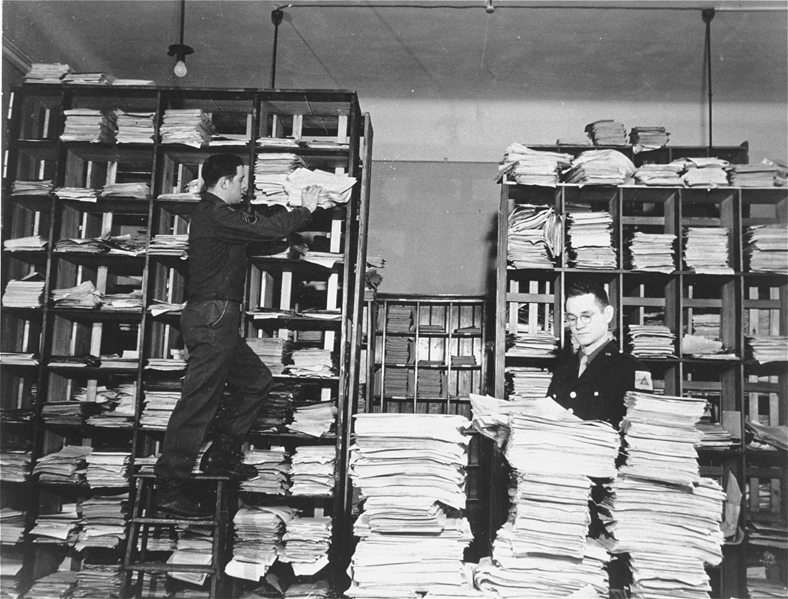 Wednesday of last week saw the deadline for filing official comments on the dreadful "plan" the Texas Commission on Environmental Quality has proposed to lower smog levels in DFW by 2018. In effect, the plan is to wait for federal gasoline changes in 2017 and hope for the best.
Wednesday of last week saw the deadline for filing official comments on the dreadful "plan" the Texas Commission on Environmental Quality has proposed to lower smog levels in DFW by 2018. In effect, the plan is to wait for federal gasoline changes in 2017 and hope for the best.
Shortly before closing time Wednesday, Downwinders at Risk and the Lone Star Chapter of the Sierra Club submitted 62 pages of criticisms concerning the plan. Not because either organization believes the TCEQ Commissioners will change heir minds, but because we're trying to establish a record that might eventually lead to a court challenge of the plan.
Although lengthy, the basic approach of the groups is two fold – call into question the state's computer modeling that's predicting success and challenge the state's exclusion of new pollution control measures on the Midlothian cement plants, East Texas Coal plants and Barnett Shale gas compressors.
Some of the highlights:
– The computer modeling the TCEQ is using for its new plan is the same it used for plans in 2006 and 2011, neither one of them successful at meeting its goal of cleaner air by the assigned deadline. In fact, the last clean air plan using this same model underestimated smog levels by almost 10 parts ber billion and actually saw a slight rise in smog at its conclusion – the first time a DFW plan ever resulted in higher ozone levels.
– In defiance of EPA guidance, the computer model TCEQ is using is more than five years old. EPA specifically recommends using an "ozone season" from 2009 to 2013. TCEQ's model is leftover from 2006, or three years older than the oldest year EPA says is appropriate.
– Also contrary to EPA rules, the TCEQ 2006 computer model ignores including the most relevant “meteorological conditions conducive to elevated air quality.” 2011 was the worst year for ozone levels in DFW since the beginning of this decade, in large part because it reflected the worst drought conditions. The three-year rolling average for the worst monitor, called the "design value" rose back up to 90 parts per billion after years of floating in the mid to upper 80's. But instead of using that year as a worst case baseline, the state defaulted to its 2006 model that doesn't incorporate the current drought.
– TCEQ's prediction of success is built on a series of unrealistic assumptions about the quantity of oil and gas pollution. For example, it underestimates the number and impact of air pollution from hundreds of large compressor stations and thousands of smaller "lift" compressors as the Barnett Shale ages. Fully 60 to 70% of all air pollution from the gas industry comes from these kinds fo facilities, so a mistake in estimating their impact could have a large chain reaction at downwind air quality monitoring sites in Tarrant, Denton, Parker and Johnson counties.
TCEQ also assumes that production levels in the Barnett will fall steeply. If they do not, there could be hundreds of tons more air pollution from the industry annually than what TCEQ assumes in its model.
That's important because the model predicts that the region will only barely squeak-by the 75 ppb standard required by 2018, with levels coming in at 75.87 at the Denton monitor site, 75.15 at Eagle Mountain Lake, and 75.04 in Grapevine. A jump in oil and gas pollution – or any other surge in pollution from any other source – could make those numbers obsolete and ruin our chances fo complying with the Clean Air Act on time…again.
– TCEQ's "Contingency Measures" are illegal. Every smog plan must have a series of quantifiable back-up contingency pans in case the options the plan relies on fail to achieve success. In this case, the state is only relying on unquantified and voluntary actions, such as "incentive" programs, the effectiveness of which cannot be measured. Since you can't measure them, you can't count them.
– TCEQ failed to consider all "reasonably available control technologies" and "measures." Nearly 40 pages is devoted to the wrong-headed, irrational, and illegal way TCEQ rejects off-the-shelf air pollution controls for the Midlothian cement plants, East Texas coal plants, and large gas compressors.
Under the Clean Air Act, a state's plan “shall provide for the implementation of all reasonably available control measures as expeditiously as practicable (including such reductions in emissions from existing sources in the area as may be obtained through the adoption, at a minimum, of reasonably available control technology) and shall provide for attainment of the national primary ambient air quality standards.” In order for the EPA to determine whether an area has provided for implementation as "expeditiously as practicable,” the State "must explain why the selected implementation schedule is the earliest schedule based on the specific circumstances of that area. Such claims cannot be general claims that more time is needed but rather should be specifically grounded in evidence of economic or technologic infeasibility.”
Step-by-step, Downwinders and the Sierra Club explains why Selective Catalytic Reduction (SCR) is a reasonable control technology for the Midlothian cement plants and East Texas coal plants. Even as the owners of one of the Midlothian cement plants applies for a permit to install the technology, TCEQ is claiming its still not ready for prime time. The groups demonstrate how requiring SCR on these major polluters would have a large impact on DFW ozone levels.
The same level of absurdity if reveled in TCEQ's rejection of electrification of gas compressors. Despite being able to significantly lower smog-pollution in the very areas where its needed most, and despite electrification even being required by many Barnett shale municipalities, the state maintains that this option is unrealistic and unachievable.
There's probably no better compendium of the various sins committed by the TCEQ plan than these comments. If you're looking for the most solid case for compressor electrification, or SCR adaptation, or just TCEQ malfeasance, this is your one-stop shop.
You may think this is a technical document, or one full of legal mumbo-jumbo. It's not, at least not for the most part. Instead it's the kind of logical, evidenced case you'd assemble for a debate with the TCEQ. It's a blow-by-blow comprehensive look at why the state isn't any more likely to meet this clean air deadline than it has any other. A case we hope is capable of persuading EPA to reject the TCEQ plan.
EPA Hearing Afternoon Delights: Medical Panel and Another Posse Swearing-in
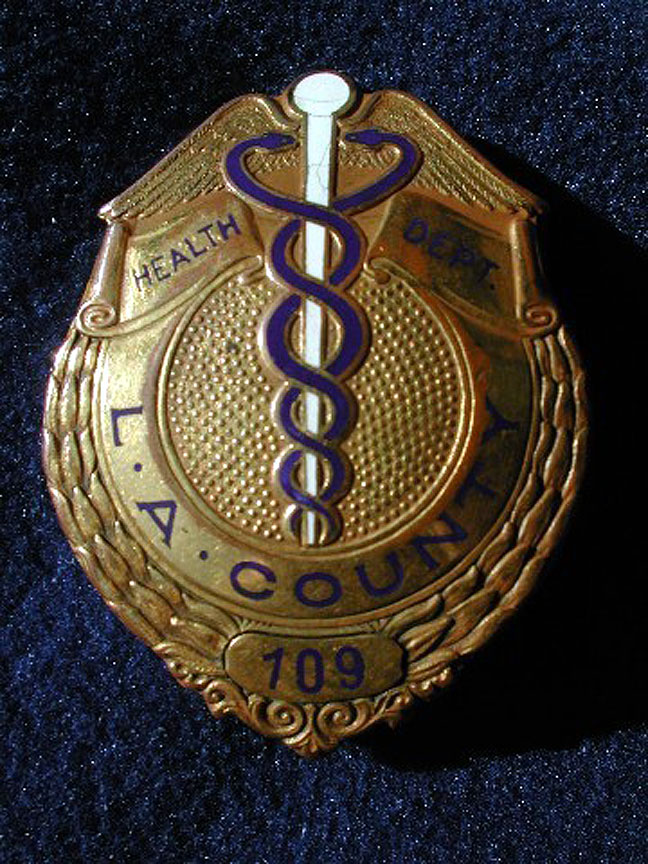 There's still some five-minute speaking slots available for Thursday's all-day EPA National public hearing at Arlington City Hall on a new ozone standard – mostly in the afternoon and evening. So if you haven't signed up yet, please do so. The EPA staffers will stay as long as there are people who want to testify. So if you get off work and want to come over and speak out at the last minute – you can. Some of you may remember the 2009 national cement plant hearing where we had almost 100 speakers and kept things going until 8:30 pm. We need to repeat that performance.
There's still some five-minute speaking slots available for Thursday's all-day EPA National public hearing at Arlington City Hall on a new ozone standard – mostly in the afternoon and evening. So if you haven't signed up yet, please do so. The EPA staffers will stay as long as there are people who want to testify. So if you get off work and want to come over and speak out at the last minute – you can. Some of you may remember the 2009 national cement plant hearing where we had almost 100 speakers and kept things going until 8:30 pm. We need to repeat that performance.
To sign-up today, e-mail EPA staffer Eloise Shepard at shepherd.eloise@epa.gov… Or just show up on Thursday in Arlington and grab an open slot.
As an added bonus and attraction, there's a special feature in at the end of the scheduled lunch break that may provide an incentive to attend. At 1:45 pm Downwinders will be sponsoring another mass swearing-in of its Citizens Clean Air Posse, complete with official badges. Because this is a national hearing, the original DFW-centric language from the earlier TCEQ hearing has been slightly re-written to read as follows:
As a member of the Clean Air Posse I pledge to do my duty to uphold the federal Clean Air Act and take responsibility to provide cleaner air to my fellow citizens – especially since the State of Texas doesn’t seem to give a damn anymore.
I pledge to help persuade the federal marshals at the EPA to make the State of Texas follow the law and provide safe and legal air to breathe.
I pledge to bring an end to the reign of lawlessness and disregard for public health, and the Clean Air Act, by the State of Texas, so help me God.
Membership in the posse entitles you to be your own Clean Air Act enforcer and make citizens' arrests of violators. It also allows you to join other members in organized round-ups to cajole and harass federal officials to do their job. Plus, you get to wear a nice-looking shiny badge while you're doing all of the above. But you don't get a badge unless you show up.
Immediately following the Posse swearing-in at 2 pm will be a panel presentation by at least three physicians coming to testify at the hearing. Because regardless of the politics involved in the decision to lower the federal smog standard, this is still a public health issue, one about how poisons in the air cause illness and disease among millions of Americans.
Dr. Susan Pacheo of the University of Texas Health Science Center in Houston specializes in Pediatric Allergy and Immunology and will speak to the threat posed by smog to children's health. Dr. John Kissel specializes in Internal Medicine in St. Louis, Missouri to discuss the impacts of smog of public health in general. DFW's own Dr. Robert Haley is a toxicologist at UT-Southwestern, and led last year's effort by the Dallas County Medical Society to close the oldest, dirtiest East Texas coal plants that affect North Texas air quality. He'll be speaking about the local impacts of smog on the air you breathe.
This is the closest thing to a rally for clean air as DFW has seen in some time, so please come out and be a supporter if you can make it. EPA needs to receive the very strong message that the public wants safe and legal air to breathe – especially in states like Texas that will never pursue that goal on its own. Your presence at the hearing tomorrow is a direct rebuke to the Texas Commission on Environmental Quality, Governor Greg Abbott, and every other Texas elected and regulatory official who takes the position that our air is just fine the way it is. Don't give them aid and comfort by sitting this one out. Show up and add your voice to those saying that Austin doesn't represent us in this battle.
Why DFW Residents Should Speak in Favor of a Lower Smog Standard at Thursday’s EPA Public Hearing in Arlington
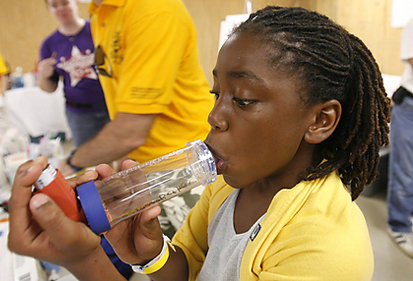
All Day NATIONAL Public Hearing on a New Federal Ozone Standard
Thursday, January 29th, 9am to 7:30 pm
Arlington City Hall, 101 W. Abram
There are only three national public hearings on the possibility of lowering the national federal ozone, or smog, standard. One is in Washington DC, another is in Sacramento, California and the third is right here in Arlington, Texas. We need everyone that can come and speak for 5 minutes on the importance of cleaner air to do so. You know industry and elected officials hostile to the EPA and the Clean AIr Act will be well-represented
To secure your 5-minute speaking slot, e-mail Eloise Shepard and ask for one in the time period during the day on Thursday most convenient for you. Please do it asap: shepherd.eloise@epa.gov.
There are at least two very good reasons why North Texas residents should support a new lower smog standard of 60 parts per billion – the lowest standard under consideration by the EPA.
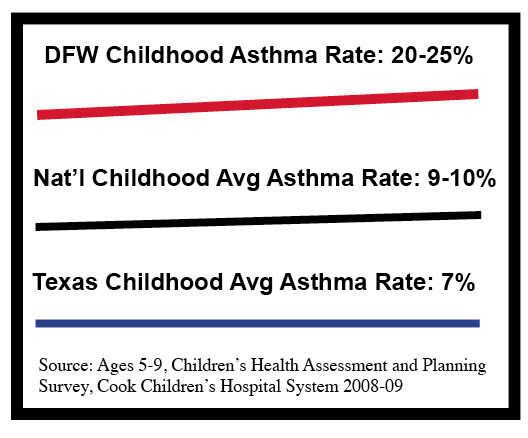 1. DFW has Epidemic Childhood Asthma Rates
1. DFW has Epidemic Childhood Asthma Rates
According to a first-of-its kind survey in 2008 by Cook Children’s Hospital, one out of every four DFW children ages 5-9 suffered from asthma. That was more than twice the national average, and more than three times the average for the state of Texas. Asthma is the most common cause of missed school days and is one of most common causes of Emergency Room visits and hospitalizations.
The DFW Hospital Council estimates nearly 1500 children in Dallas County visited an emergency room or were admitted to a hospital due to asthma in 2012. Dallas County has the highest number of child asthma hospitalization in the state.
According to EPA itself, a new 60 parts per billion (ppb) standard for ozone would eliminate roughly 1.8 million asthma attacks, 1.9 million missed school days, and 6,400 premature deaths nationwide – 95% of all ozone-related deaths. Few regions would benefit more from such a lower ozone standard than DFW.
2. It’s One of the Few Ways to Force Reductions in Harmful Air Pollution in Texas 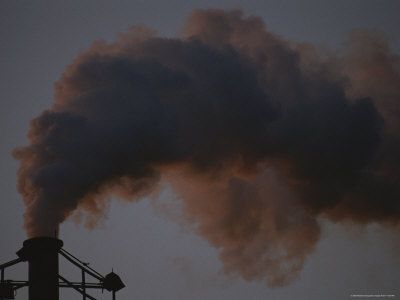
Texas is a place where industry rides rough shod over state regulators and citizens don’t have a level playing field to seek relief from the adverse health consequences of air pollution. Tougher federal ozone standards are one of the only ways to reduce air pollution from large local sources like the cement kilns in Midlothian, gas facilities in the Barnett Shale, and coal plants in East Texas.
Lower federal ozone standards over the last two decades, combined with grassroots campaigns have resulted in the lower volumes of smog pollution from the Midlothian cement kilns, plus reductions in other kinds of harmful pollution from the kilns as well, like particulate matter, and carcinogens. A new 60 ppb ozone standard would mean the kilns would have to add state-of-the-art controls to bring down those totals even more – to as much as 90% reductions. The same is true with the East Texas coal plants and with polluting gas facilities. To get down to 60 ppb ozone levels in DFW could mean deep cuts from the largest sources of industrial air pollution in North Texas. Something that probably won’t happen without a new, lower federal ozone standard.
And that won't happen without a lot of you showing up on Thursday to say you want and need cleaner air to breathe. Reserve your 5-minute speaking slot now. It's a good investment if you live in Texas.
Bottom Line: If You Think DFW Still Has A Smog Problem, Be in Arlington Tonight
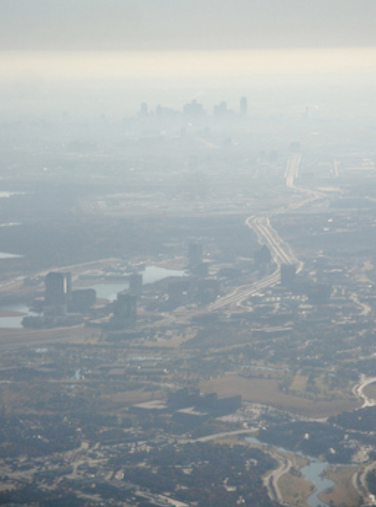 You don't have to have any special technical knowledge. You don't have to know regulatory or legal jargon. You just have to believe we still have a problem with smog in Dallas-Fort Worth. That's all it takes to participate in the air quality extravaganza happening tonight in Arlington. It's a rare two-for one chance to help the fight for cleaner air.
You don't have to have any special technical knowledge. You don't have to know regulatory or legal jargon. You just have to believe we still have a problem with smog in Dallas-Fort Worth. That's all it takes to participate in the air quality extravaganza happening tonight in Arlington. It's a rare two-for one chance to help the fight for cleaner air.
Public Hearing on the State's New DFW Air Plan 6:30 pm Tonight, Arlington City Hall, 101. W Abram
All you have to do is sign-up to speak, wait for your name to be called, and tell the state and the EPA representatives who'll be present that you want something better than a clean air plan that does nothing to get cleaner air except wait for a new federal gasoline formula to hit the market a year before the plan's deadline. The more people that do this, the more pressure EPA is under to reject this terrible state plan. Nothing fancy. Just show up and say you want better – that this region deserves better after two decades of being in violation of the Clean Air Act.
Click here to send prepared written comments to the state and EPA. You can add your own as well.
Roasting and Toasting of Retiring State Representative Lon Burnam – A Fundraiser for Downwinders at Risk, 7:30 -10 pm, Tonight, South Street Patio, 400 South Street – about four blocks east of Arlington City Hall
If you think DFW smog is still a problem, after you say your piece at the state hearing come and support the only group committed to trying making its elimination a priority – Downwinders at Risk. Since the mid-1990's we've been using these air plans to raise issues, get information, and sometimes even win victories that actually do lead to cleaner air. A big reason there's no more burning of hazardous waste in the Midlothian cement plants, and all of those cement plants have upgraded their equipment is because of the work we did around smog. Lately, we've been using them to drive home how much gas and oil pollution contribute to regional smog.
But we need your help – in terms of attendance at public hearings, and in terms of financial assistance. For your donation of $35 to this roasting and toasting of Lon, you get an evening of entertainment and take part in a salute to a real local clean air hero. And you make it more possible to keep challenging the status quo on behalf of your lungs.
CLICK HERE TO GET YOUR TICKETS ONLINE OR GET THEM AT THE DOOR TONIGHT
If you still think we have a smog problem, there's two things you can do about it tonight. Thanks.
Citizens To Form Posse, Demand State Enforce the Clean Air Act at Thursday Hearing on New DFW Air Plan
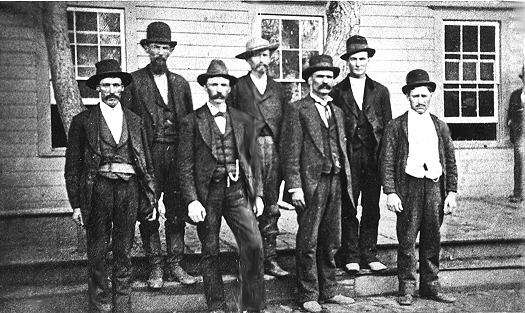 (Arlington) Critics of a new plan to clean the air in Dallas-Ft. Worth are using a public hearing on Thursday evening to accuse the state of Texas of breaking the law by not requiring the implementation of pollution control technologies already in widespread use to help lower smog levels in North Texas.
(Arlington) Critics of a new plan to clean the air in Dallas-Ft. Worth are using a public hearing on Thursday evening to accuse the state of Texas of breaking the law by not requiring the implementation of pollution control technologies already in widespread use to help lower smog levels in North Texas.
“We’re asking residents to come out and get sworn into a citizens posse to help us make the state follow the Clean Air Act,” said Jim Schermbeck, Director of the local clean air group Downwinders at risk, one of the leading opponents of he new plan. “Austin is going to ridiculous, Monty Python-like lengths to avoid new controls on the Midlothian cement plants, East Texas coal plants, and local gas facilities in this new plan – even though those controls are now commonplace in each industry.”
Thursday’s public hearing centers on a new plan to comply with the federal ozone standard of 75 parts per billion (ppb) by 2018. DFW has never achieved such a low level of smog, and only this last year dipped below the 1997 standard of 85 ppb for the first time with the help of cooler, wetter summer.
EPA says a state plan like the one the Texas Commission on Environmental Quality is proposing for DFW must include “all Reasonable Available Control Technologies,” and “all Reasonable Available Control Measures” to get lower smog levels as “expeditiously as possible.” EPA defines these as technologies as ones that are “technically and economically feasible.” But according to Schermbeck, the state of Texas is deliberately ruling out local use of pollution controls already adopted by industry that could speed cleaner air.
He cited three examples. Selective Catalytic Reduction, or SCR acts much like the catalyst on cars, only on a much larger scale for industrial plants. It’s already in use on at least half a dozen European cement plants where it’s reduced smog-forming pollution by up to 90%, and on many coal-fired power plants across the world and in the US, where it achieves the same results. Yet the TCEQ DFW air plan doesn’t require SCR on the largest single sources of smog pollution in the region, the Midlothian cement plants, or the East Texas coal plants that are known to impact DFW air quality, saying the technology isn’t “feasible.” TCEQ maintains this stance even though the Holcim cement plant in Midlothian has announced plans to include an SCR unit on one of its own kilns.
“Here’s a pollution control technology already in operation and achieving great results, with a cement plant in North Texas already adopting it, but the state’s position is that it isn’t ‘feasible’. It’d be comical if it wasn’t delaying cleaner air for over 6 million people that haven’t had it in decades.”
Besides ignoring SCR on cement and coal plants, Schermbeck said the TCEQ has also ruled-out electrification of large gas compressors as “infeasible” – despite the widespread use of electric compressors In the Barnett Shale already and the requirement of municipalities like Dallas and Southlake to allow nothing but electric compressors within their city limits. According to a 2012 study by the Houston Advance Research Consortium, compressors could increase downwind ozone levels as much as 3 to 10 parts per billion. There are at least 647 large compressors in the DFW “non-attainment area” covered by the TCEQ air plan.
“Requiring just these three technologies that are already on the market and being used in their respective industries could reduce air pollution by thousands of tons a year and help us achieve compliance with the new federal ozone standard much quicker,“ said Schermbeck. He said they all pass the test of being feasible according to EPA definitions. “By law, they should be required.”
Instead, the state is relying exclusively on a new federal gasoline mix being introduced in 2017 to achieve the required 75 ppb standard by 2018. Although it’s expected to help lower ozone levels across the country, it won’t get DFW down to the level of 75 ppb alone. To make the plan work on paper, the state has had to estimate oil and gas pollution downward in a way Schermbeck and others claim is unrealistic.
“Basically, the state’s approach is to do absolutely nothing for the next three years and hope the federal gasoline change brings it “close enough” to the lower standard. But hope is not a plan.”
Schermbeck said his group would be passing out badges to members of their clean air posse and recruiting residents to persuade the EPA to reject the state’s proposal. The federal agency has the final say. But there’s also always court – where many clean air rules for the state of Texas have been decided over the last 20 years. “If government won’t enforce the law, we may have to do it ourselves.”
2014 DFW Smog Report: Good News But Don’t Hang Up the Gas Mask Yet
 For the first time since DFW began recording its smog levels, the region's three-year running average dipped below the 1997 eight-hour 85 parts per billion (ppb) standard. After years of leveling off at around 86-87, it's dropped to 81 ppb. That's good news.
For the first time since DFW began recording its smog levels, the region's three-year running average dipped below the 1997 eight-hour 85 parts per billion (ppb) standard. After years of leveling off at around 86-87, it's dropped to 81 ppb. That's good news.
DFW's decrease is attributed to 2011's terrible numbers rolling off the board and a wetter, cooler and windier summer than normal these last five months or so. As both drought-ridden 2011 and this year's results demonstrate, weather still plays an extremely critical role in how large or small our smog problem will be. Another summer or two like 2011 could easily put us back over the 1997 standard. More wet and cooler weather could see the decrease continue.
The news would be better except that we were supposed to have originally accomplished this milestone in 2009, then again last year after a second try, according to the Texas Commission on Environmental Quality (TCEQ).
As it is, we still haven't reached the current, more protective 2008 national standard that was revised downward to 75 ppb after a review of the scientific literature.
In January, TCEQ will host a public hearing on its proposed "plan" to EPA to meet that goal that predicts most, but not all DFW monitors will reach 75 ppb by the summer of 2018.
Despite overwhelming evidence that new controls on the Midlothian cement plants and the reduction of gas industry pollution could speed this achievement, TCEQ's new plan contains no new pollution control measures on any major sources of smog polluters – cement kilns, coal plants, gas sources – but instead relies on the federal adoption of a new lower-sulfur gasoline mix for on-road vehicles. Like past proposals by Rick Perry's TCEQ, this one depends solely on the feds to get them into compliance. TCEQ isn't lifting a regulatory finger to help.
And its new plan once again aims high, not low. At last count, there were at least three Tarrant and Denton County monitors that TCEQ admitted would still be above the 75 ppb standard at the end of 2018. "Close enough" is the reply from Austin.
From a public health perspective, it's even worse. Why does the ozone standard keep routinely going down? Because new and better evidence keeps accumulating to show widespread health problems at levels of exposure to smog that were once considered "safe." About every five years, the EPA's scientific advisory committee must assess the evidence and decide if a new standard needs to be enforced to protect public health.
For most of the last ten years, the position of this independent panel of scientists is that the standard should be somewhere between 60 and 70 ppb. They were ignored in 2008. They were ignored in 2011. They once again came to this conclusion last May. What was the evidence that persuaded them? That the current 75 ppb standard for smog causes almost 20% of children in "non-attainment areas" to have asthma attacks, and leads to hundreds of thousands of deaths every year. Cutting the standard to 60 ppb reduces those deaths by 95%. Since the Clean Air Act states the EPA is duty bound to set a smog standard protective of human health, 60 ppb seems to be the threshold level that the current scientific literature says is actually safe for the majority of the population most vulnerable to the impact of bad air. By contrast, a smog level of 70 ppb only reduces those deaths by 50%. (Policy Assessment for the Review of the Ozone National Ambient Air Quality Standard, U.S. Environmental Protection Agency, Office of Air and Radiation, Office of Air Quality Planning and Standards, Health and Environmental Impacts Division, Ambient Standards Group, August 2014)
By December 1st, EPA Administrator Gina McCarthy must decide whether to officially recommend a standard in that 60-70 ppb range. It looks as though this time, the EPA might just endorse what the scientists are recommending, although it's unclear whether it'll be the upper or lower part of that range.
So even while the TCEQ is saying it's "close enough" to achieving the 75 ppb standard left over from George W's administration by 2018, the evidence is that level is too high to prevent large public health harms and must be lowered. A lot.
This is why it's so infuriating that the TCEQ is satisfied with getting only "close enough" to a 2008 standard that's about to become obsolete. Austin knows it could demand better air pollution control measures on the market right now that would accelerate the decrease in smog. It knows the pubic health would benefit from requiring such measures. But it's willing to condemn DFW children and others at risk for many more years for the sake of keeping its "business-friendly" reputation.
And while this year's slip below the 85 ppb standard is a sign of some progress, it remains true that DFW still has the worst air in Texas – a title we took from Houston years ago. Take a look at the chart summarizing the 2014 ozone season across Texas. Despite the nicer weather, DFW still had almost twice as many readings above 75 ppb as Houston and four above the 85 ppb standard. Houston had no readings above 85. In fact, San Antonio was the only other city to record a level so high – once.
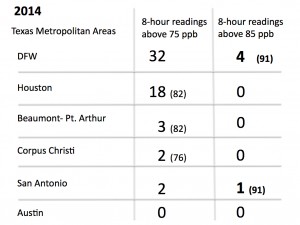 DFW still has a smog problem and all it takes is another hot and dry summer to see it escalate. We need the help more controls on major sources could give us. We need Selective Catalytic Reduction on ALL the Midlothian cement and East Texas coal plants. We need electrification of gas compressors in the Barnett Shale. This should be the message to both the TCEQ and EPA during the public hearing in January.
DFW still has a smog problem and all it takes is another hot and dry summer to see it escalate. We need the help more controls on major sources could give us. We need Selective Catalytic Reduction on ALL the Midlothian cement and East Texas coal plants. We need electrification of gas compressors in the Barnett Shale. This should be the message to both the TCEQ and EPA during the public hearing in January.
DFW smog in 2014: we've met the Clinton era standard for now, on the way to trying to get "close enough" to the W Standard, and still very far from a new Obama standard. Don't hang up the gas mask yet.
TCEQ: Link Between Fracking and Air Quality, No Cement Controls Just “Because”: Highlights From Tuesday’s Air Meeting
 Dallas Resident Liz Alexander showed up at the Council of Governments meeting room on Tuesday to lend her support to the effort to get more out of an anemic state ant-smog plan than the state wants to give. She was a warm body whose presence would be its own statement of concern. She was being a good trooper by just showing up.
Dallas Resident Liz Alexander showed up at the Council of Governments meeting room on Tuesday to lend her support to the effort to get more out of an anemic state ant-smog plan than the state wants to give. She was a warm body whose presence would be its own statement of concern. She was being a good trooper by just showing up.
At first she sat far from the action amidst the rows of seats for bystanders and, despite encouragement, was resigned to just listening, because as she explained, "she didn't know enough to ask questions."
Then someone urged her to move up to the rectangle of tables where the presenters stand and deliver, where there are microphones to raise the volume of concerns and questions that might be posed by mind-numbing reassurances that everything is going hunky-dory. As more of these air quality meetings have occurred, citizens have been less and less shy about taking up these front row seats that look more official than the rest; look like they should be reserved for guys in suits. Increasingly they're occupied by people in street clothes.
And then, after much information had been paraded in front of Liz, she did something she did not think she was qualified to do only about 90 minutes earlier. She asked a question. It was about what assumptions had been included in the information about unspent air pollution clean-up dollars that are piling up in Austin. She got an answer from a local COG staff person in real time that satisfied her. In the space of one meeting she moved from spectator to participant.
And she wasn't the only one. More than any other meeting so far, this one involved more citizens asking more questions about more subjects – and it revealed just how thin the state's rationale is for doing nothing.
As predicted, it was a day for the Texas Commission on Environmental Quality to explain why its new DFW anti-smog plan was really going to work this time – unlike the five previous failures – and why it wasn't going to be considering any new controls on the Midlothian cement plants or on gas compressors – a refutation of the case Downwinders at Risk had made in its June 16th presentation.
But here's what really happened: For the first time in these proceedings the state admitted that oil and gas emissions have a big influence on regional air quality. And when a former County Judge asked an TCEQ's Air Quality Manager specifically why anti-smog controls already being used on cement kilns in Europe were not being considered for the Midlothian kilns, the staffer couldn't say, offering up only the longest, most pregnant pause by any state staffer in the history of these meetings.
After being heavily criticized for months for leaving at least four monitors above the 75 ppb federal smog standard even after its plan had ended in 2018, the state came back to this meeting saying they only had three sites above 75 ppb now, and by margins that didn't exceed the standard by more than 1 part per billion. Between June and August, there had been a remarkable drop in future estimated smog levels at the area's monitoring sties in the state's computer modeling – particularly at the historically most stubborn monitoring sites in Denton and Northwest Tarrant County.
What had caused this drop? A relatively modest decrease in Nitrogen Oxide pollution of around seven tons a day and a decrease in Volatile Organic Compounds of about 15 tons per day. That's not a lot of pollution to produce such a large decrease in monitor readings in the computer model.
A more important question is: where did the decreases in air pollution come from that could produce such dramatic results in the modeling? The answer: primarily from oil and gas industry sources. Based on TCEQ's own formula relying on the declining number of new wells being drilled in the Barnett Shale.
For the moment forget the methodological qualms you might have about that declining well assumption. Instead, appreciate the fact that the same state agency that couldn't bring itself to ever say the Barnett Shale was producing air pollution holding DFW back from meeting Clean Air Act smog standards now says that it's decreases in that very kind of pollution that are having such a substantial effect on the monitors in the western part of the Metromess that have been the most resistant to other control strategies. TCEQ has just proven a causal link its been denying for over seven years now.
It can't be just a one-way street. If declining oil and gas air pollution equals better air quality in the TCEQ's computer model, so increases in oil and gas pollution must lead to worse air quality.
There are all kinds of reasons to doubt that the drop in total oil and gas air pollution will happen at all or drop as fast or as sharply as the TCEQ predicts. Afterall, they're 0 for 5 in such matters. They may be underestimating the amount of total air pollution from all gas and oil sources and so the drop will not be as sharp. They may be underestimating the impact of lots of new lift compressors that will be showing up to squeeze the last bits of gas from older wells even as new wells are not drilled as often. But as of Tuesday the link has been made by TCEQ itself that such a drop results in big decreases in smog levels in Denton and Northwest Tarrant County. That's something that citizens can use to argue as proof of the impact of oil and gas facilities on local air quality.
Of course, it only took the span of about 30 minutes for the TCEQ to internally contradict itself about those results.
According to TCEQ computer modelers, natural gas Compressor Stations large enough to be considered "point sources" just like cement kilns or power plants will be responsible for over 17 tons of Nitrogen Oxides, and 26 tons of VOCs a day in 2018 – well over the amount of oil and gas pollution decreases that resulted in those lower monitoring numbers in Denton and NW Tarrant County. But according to the TCEQ staff responsible for suggesting new controls in the new smog plan, those numbers are not large enough to have an impact on improving DFW air quality or warranting a policy of electrification for those compressors that could reduce their air pollution to a fraction of those volumes.
So while 7 tons of NOx reduction from Oil and Gas sources is large enough to bring some of the most stubborn monitors down a whole part per billion, reducing air pollution from Oil and Gas sources by another 17 tons of NOx reduction would have no effect on DFW air quality at all and it's just not worth it to make them electrify compressors. Honest, that was the logic in play on Monday, and it didn't hold up very well under questions from people like Liz Alexander.
And that was all before you got to why the Midlothian cement kilns could not, no way, no how, possibly, under any circumstance, be required to install Selective Catalytic Reduction controls, just like their European counterparts have done over the last 15 years.
Turns out, it's just because.
Oh, the TCEQ staffer cited four criteria for any new control measure to meet before it could be considered. Let's see, there was "technological feasibility." Since there are at least seven full-scale SCR units up and running in Europe, that couldn't be a problem. It's accepted technology by some of the same companies operating kilns in the US – including LaFarge-Holcim.
There was "economic feasibility." And since there are all those SCR examples already in the European market and no company has gone bankrupt running them, that's also off the table. Plus the fact that the TCEQ's own 2005 study of SCR concluded it was "available technology" then that would only cost $1000 to $3,000 per ton of NOx removed – versus the up to $15,000 per ton of NOx removed ratio allowed in the state's own official diesel engine replacement program. Coming in at one-fifth the cost of what the state already said was economically feasible, it certainly ruled out that one.
There was the third criterion – that controls couldn't cause ‘‘substantial widespread and long-term adverse impacts.’’ The state said that wasn't the reason they couldn't be considered either, although the TCEQ staffers seemed to hedge a bit here, seemingly wanting to say that, really, they didn't want to cause themselves adverse impact by admitting that they had been wrong for over a decade about this stuff.
The proposed control cannot be ‘‘absurd, unenforceable, or impracticable.’’ Clearly, if the Europeans are doing it on their kilns, it's none of those either. It's quantifiable, and up and running in power plants, cement kilns and incinerators.
And it has to speed the attainment deadline by a year. No problem. SCR could do that if it was installed in a timely fashion.
So at the end of the state's presentation, former Dallas County Judge Margaret Keliher asked the TCEQ staffer exactly why SCR wasn't considered a possible pollution control measure since none of these criteria that had been presented seem to rule it out. And the TCEQ's staffer's response was…………………………………………………………………………………………………………………………………………………………………….
No, really, that was the response. She couldn't say. It was that embarrassing. Because the rejection of SCR by TCEQ isn't based on any of those criteria. It's based on a political decision that's been made that no new pollution controls will be sought on the kilns or any other major industrial polluter as long as Rick Perry is running for President. Or "just because."
How ridiculous is this? At this point the TCEQ is taking an even more regressive view of SCR controls than the cement industry itself. In June, Holcim Cement's Midlothian plant requested a permit from the state that would allow it to build either a Thermal Oxidizer or an SCR until for the control of VOC pollution. Being the free market fanatics the Perry Administration claims to be, doesn't the fact that one of the Midlothian cement plants is asking for a permit that includes the possibility of installing SCR mean it's automatically technologically and economically feasible? The market is never wrong, right? Are the folks at Holcim so enamored of kinky, off-the-wall green technology that they'll just include it in a permit for laughs? These guys are Swiss engineers. They have no sense of humor.
Denial of SCR as a viable control measure that could reduce smog pollution is making the TCEQ contort into sillier and sillier positions. It's making them deny the conclusions of their own almost-decade old report that said it was available to put in a kiln in 2005. It's making them deny the fact that SCR is up and running at over half a dozen kilns in Europe. It's forcing them to once again use the "Midlothian limestone is magically special" defense that has been used to forestall any progress in pollution control there over the last 25 years. The arguments used against SCR are exactly the same as were used against the adoption of less effective SNCR technology before it was mandated. In case you hadn't noticed, they're still making cement in Midlothian despite the burden of having to nominally control their air pollution.
The state wants to power through this anti-smog plan just like they did the last one in 2011. They don't want to have to make industry do anything. But at this point the denial of SCR as a control measure to be included in the next DFW anti-smog plan is so absurd, as is the justification for electrification of gas compressors, that it might be fodder in the next citizens lawsuit over a DFW anti-smog plan, which usually follows these things like mushrooms after a rainstorm.
Want to get involved in this fight and make it more difficult for the state to get away with doing nothing at all about DFW smog – again? Please consider attending our next DFW Clean Air Network meeting – THIS SUNDAY, AUGUST 17th, from 3:30 pm to 5:30 pm at the offices of the Texas Campaign for the Environment across from Lee Park in Dallas, 3303 Lee Pkwy, Suite #402 (214) 599-7840. Citizens are the only force that can make this plan better. Be there, or breathe bad air.
Want to Quiz the State Over Crappy DFW Air? Tomorrow’s Your Chance As the Empire Strikes Back
 Rick Perry's minions at the Texas Commission on Environmental Quality (TCEQ) are drafting a new anti-smog plan for DFW this summer and fall. The only access DFW residents have to how it's being done and why are through periodical regional air quality meetings hosted by the Council of Governments in Arlington. At these meetings staff from TCEQ make presentations on why the air in DFW is getting so much better and why no new pollution control measures are needed to reach smog standards required by the Clean Air Act – despite the fact that the state is 0 for 5 in plans to attain compliance with those standards. In fact, the last such plan from Austin actually resulted in slightly higher levels of smog.
Rick Perry's minions at the Texas Commission on Environmental Quality (TCEQ) are drafting a new anti-smog plan for DFW this summer and fall. The only access DFW residents have to how it's being done and why are through periodical regional air quality meetings hosted by the Council of Governments in Arlington. At these meetings staff from TCEQ make presentations on why the air in DFW is getting so much better and why no new pollution control measures are needed to reach smog standards required by the Clean Air Act – despite the fact that the state is 0 for 5 in plans to attain compliance with those standards. In fact, the last such plan from Austin actually resulted in slightly higher levels of smog.
Tomorrow, Tuesday August 12th there will be another such regional air quality meeting. It's going on from 10 am to 12 noon at the Council of Government headquarters in Arlington at 616 Six Flags Road, right across from the amusement park (insert your own joke here). Of course, it's during business hours – you didn't think they're going to make it easy for the public to attend, did you?
Despite that, beginning in April more and more local residents have been showing up at these meetings to express their concern at the lack of progress in bringing safe and legal air to DFW. One of the reasons is that these meetings are the only forum available to citizens to question TCEQ staff in person – and then ask follow-up questions if you don't like the first answer. It's their only opportunity to be a kind of clean air Perry Mason and because it's a public meeting and everyone's looking at them, TCEQ staff have to at least make an attempt to answer those questions.
Things reached a high point at the last meeting in June when Downwinders and the Sierra Club were allowed to make their own presentations about why the state is falling down on its job. A roomful of concerned citizens and elected officials saw the case against the state was self-evident – all we had to do was quote from its own past press releases and memos to make our point.
Tomorrow's meeting is the first chance the state will have to give a rebuttal to those citizen group presentations. Staff will present all the reasons why we don't need new air pollution controls on the Midlothian cement plants, the gas industry, or the East Texas coal plants, and why another do-nothing anti-smog plan from Austin will be just dandy.
And so, if between inhaler bursts you ever wanted to quiz officials about Rick Perry's air pollution strategies, tomorrow's meeting is going to be your chance.
You may think you're not qualified, but you'd be wrong. Simple common sense questions are often the hardest ones for the TCEQ staff to answer, because you know, they're based on common sense, and so many of their policies aren't.
This is how citizens uncovered the fact that TCEQ was hiding oil and gas pollution in other categories not named oil and gas. This is how we got the TCEQ to release maps of where all the gas industry compressors in DFW are after first explaining there were no such maps. And so on.
All that you need is a curious mind. They're not prepared for those.
Tomorrow, 10 to 12 noon is your opportunity to show your concern about breathing bad air, your desire to see major industrial sources of pollution better controlled, and why you want these anti-smog plans to do more. Be there or keep breathing bad air.
